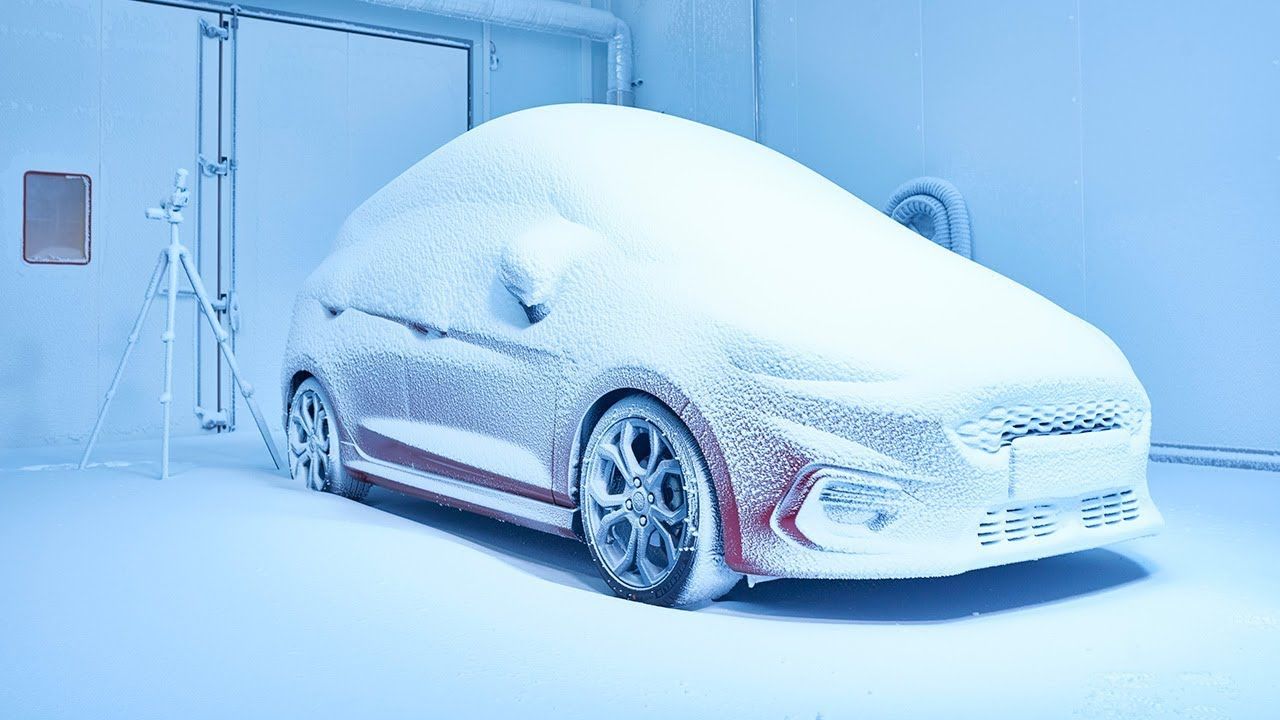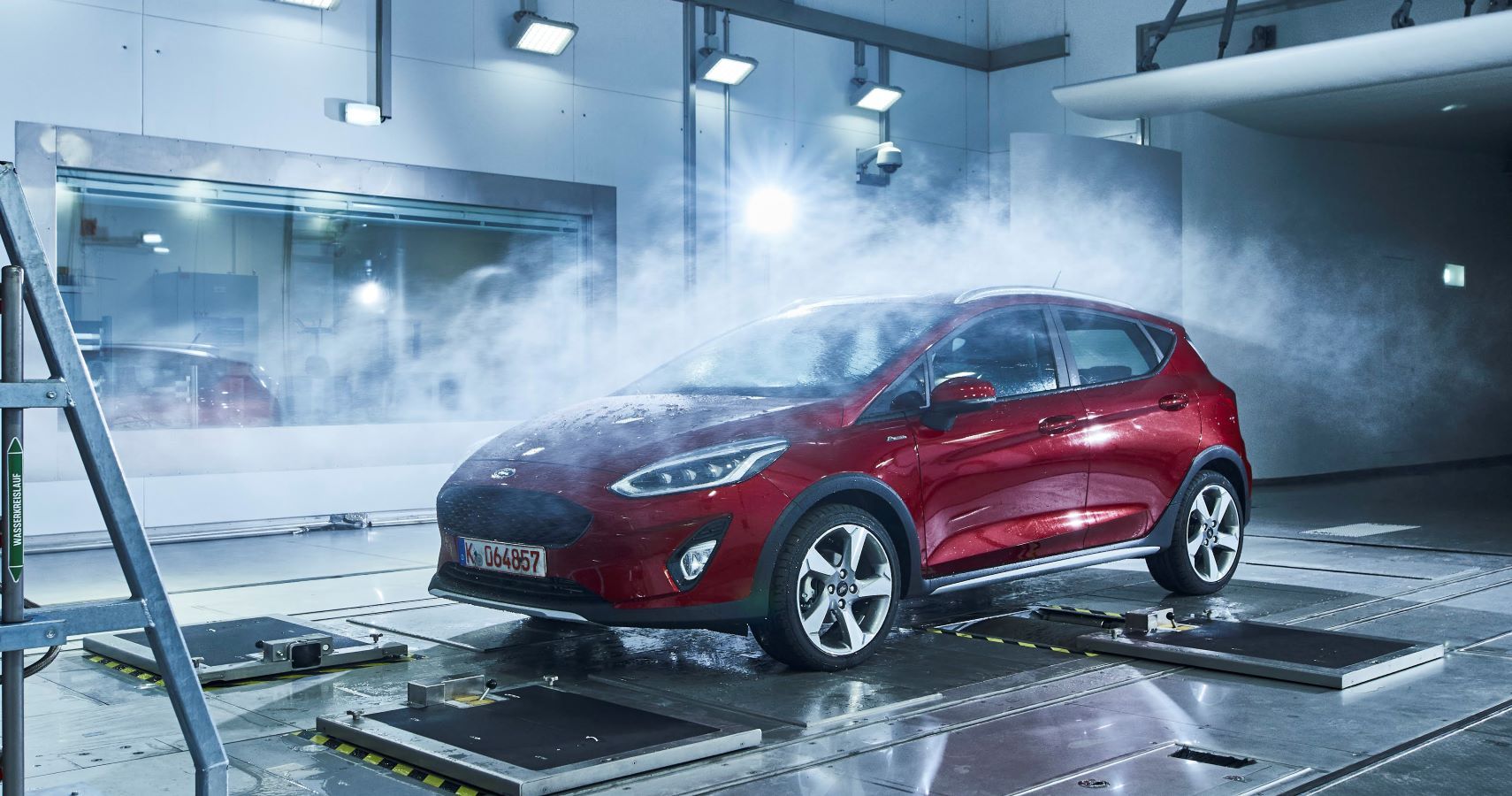There's a factory that is as big as a football field in Cologne, Germany which contains every imaginable weather condition possible. Ford's weather factory is the kind of place that you'd think only exists in movies or your imagination, but this state-of-the-art weather factory is very much a real place. This factory is the location that Ford tests all of its vehicles before their vehicles hit the streets and experience Mother Nature-made weather conditions. Officially known as the Ford Environmental Test Center, this facility can produce high altitude conditions and blizzard conditions alike.
The ability of Ford to stimulate diverse environmental conditions to test how their vehicles withstand such conditions, gives Ford an advantage over their competitors. The new advanced facility from Ford cost over 70 million Euros, or over $81 million to construct. “The vast range of punishing simulation tests will enable Ford drivers to be confident their vehicles can handle whatever climate zone they live in,” said Joe Bakaj, Vice President of Product Development at Ford of Europe. “Travelling to the four corners of this building is like taking a trip to the four corners of the world, and our engineers will do that around the clock, every day, to continue to develop future best-in-class vehicles.”
What Weather Conditions Can This Factory Produce?
The Ford Environmental Test Center can produce tropic thunder, heat, altitude, freezing conditions, rain, wind, and even snow. The weather factory from Ford in Cologne, Germany has a variety of different areas around the globe in mind when producing these weather conditions. For example, tropic thunder conditions are set to mimic the climate in Singapore, while the heat condition aims to replicate placing the car in the middle of Death Valley. The engineers of Ford vehicles were not joking around when they claim to be able to mimic high altitude conditions either, as there is not many places at a higher elevation than the Mt. Everest Base Camp - which the engineers hope to replicate within the Ford Environmental Test Center. Likewise, freezing conditions aren't simply set up at a few degrees Fahrenheit below freezing, but rather aim to replicate conditions found in eastern Siberia, within the Arctic Circle.
As the Ford facilities are now fully operational in Cologne, Germany, engineers now have the ability to work on ten different vehicles simultaneously. The Ford facility can also cool two rooms to negative 40 degrees Fahrenheit and heat them up to 131 degrees Fahrenheit, while additionally having the ability to generate 95 percent humidity. The testing that all Ford vehicles undergo here at the weather factory includes comfort, safety, and durability, as well as electrical performance, braking, air conditioning, trailer towing, cabin heating, and traffic jam situations. Ford engineers take it a step further and analyze the effects of high-speed winds on exterior parts, check the robustness against rain and snow, and see how fast a windscreen defrosts at different temperatures to fully test their vehicle's capabilities.
Do Other Car Manufacturers Have Similar Facilities?
In short, the answer is no - other car manufactures have comparable facilities, but the developments in manufactured weather conditions that Ford has developed, separate them from the competition. The Ford Environmental Test Center offers the first automotive wind tunnel to simulate heavy snow and altitudes of 5,200 meters. This simulated weather provides Ford vehicles the same experience as they would get driving around the same elevation as the Mount Everest North Base Camp. There is not a single car manufacturer, besides Ford, that can recreate such extreme weather conditions within their own facilities.
“We can see how windshield wipers function in Arctic temperatures, how engine performance changes in extreme heat and cold, and even how much snow falls on the driver’s head when they open the door. It’s an engineer’s dream,” said Michael Steup, the Project Manager at Ford's Environmental Test Center in Cologne, Germany. The facility requires 11 megawatts of electricity, or enough electricity to power a small village of 2,400 people. All the electricity used at the Environmental Test Center is from an environmentally friendly source and is fully renewable. The electricity provided to power the entirety of Ford's facilities in Cologne, Germany is provided by RheinEnergie. RheinEnergie acquires its power through certifiable sustained sources in Scandanavia.
This is not the only facility in Europe that Ford has, as there is actually a sister factory to the Environmental Test Center, called the Ford Lommel Proving Ground. The Ford Lommel Proving Ground, in Belgium, is home to a specific pothole-testing track, side-wind tests, and saltwater and mud baths. The recently developed facilities in Cologne, Germany are paired with Ford's LPG to fully test all Ford vehicles to the furthest extent and to find the vehicles' full capabilities.


